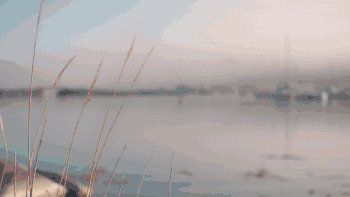Cinemagraph
Cinemagraphs are still photographs in which a minor and repeated movement occurs, forming a video clip. They are published as an animated GIF or in other video formats, and can give the illusion that the viewer is watching an animation. A variation is a video snapshot (clip composed like a still photo, but instead of a shutter release it is captured using the video recording function with its audio track and perhaps showing minor movement such as the subject's eye blinks). Another variation is an audio snapshot (still photo linked to an audio file created at the moment of photo capture by certain cameras that offer this proprietary function).[1]

Cinemagraphs are made by taking a series of photographs or a video recording, and, using image editing software, compositing the photographs or the video frames into a seamless loop of sequential frames. This is done in such a way that motion in part of the subject between exposures (for example, a person's dangling leg) is perceived as a repeating or continued motion, in contrast with the stillness of the rest of the image.
The term "cinemagraph" was coined by U.S. photographers Kevin Burg and Jamie Beck, who used the technique to animate their fashion and news photographs beginning in early 2011.[2][3]
See also
- Time-lapse photography
- Ken Burns effect
- QuickTime VR
- Worship presentation software often employs cinemagraphs
References
- "NYC Photographer Jamie Beck discusses the cinemagraph". Film Industry Network. July 8, 2011.
- Flock, Elisabeth (12 July 2011). "Cinemagraphs: What it looks like when a photo moves". Washington Post BlogPost. Retrieved 29 July 2011.
- Cohen, Joshua (10 July 2011). "Cinemagraphs are Animated Gifs for Adults". Tubefilter News. Retrieved 29 July 2011.
External links
| Wikimedia Commons has media related to Cinemagraphs. |
- Cinemagraphs.com, showing the work of Burg and Beck